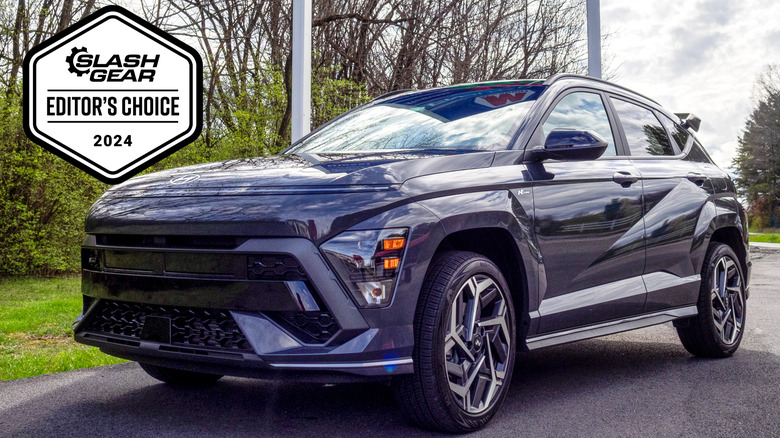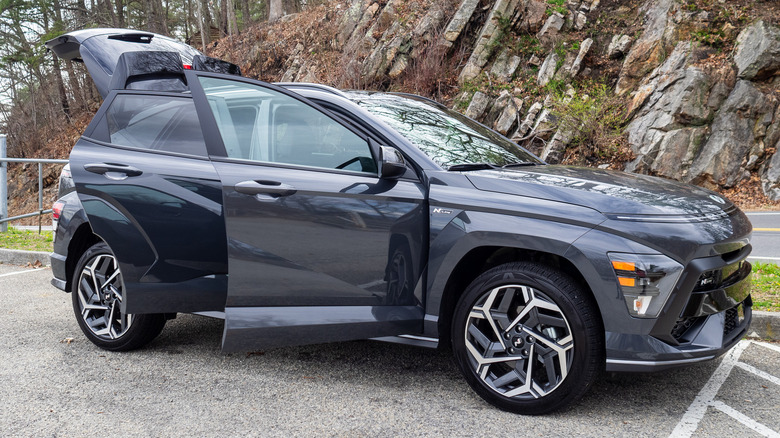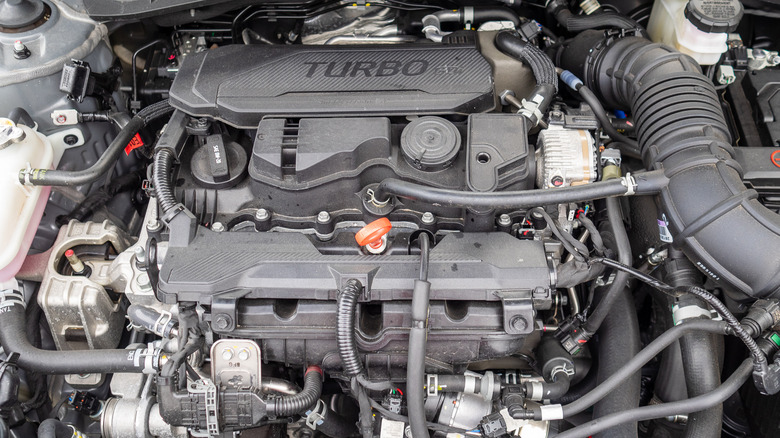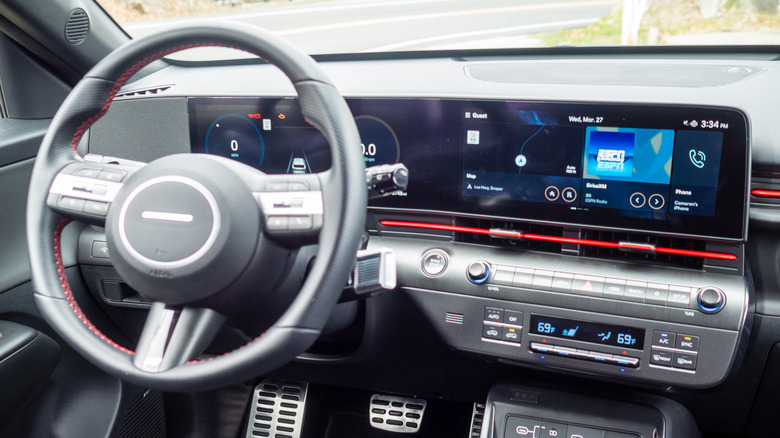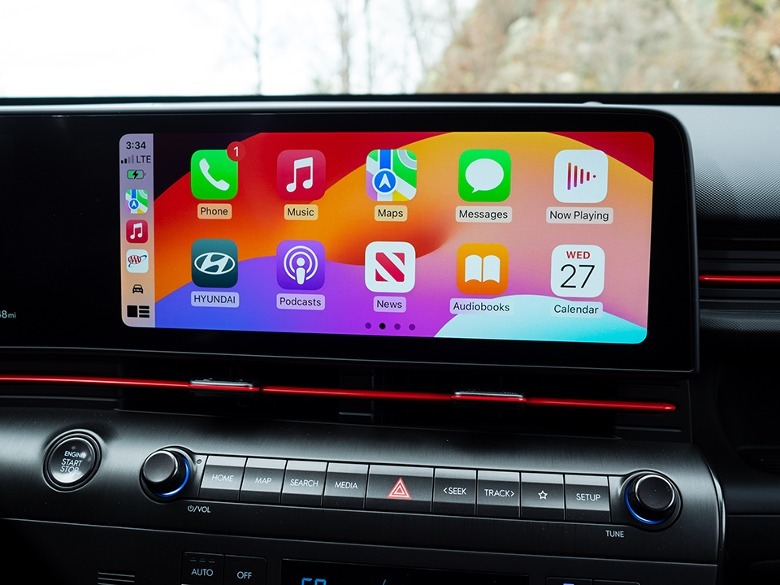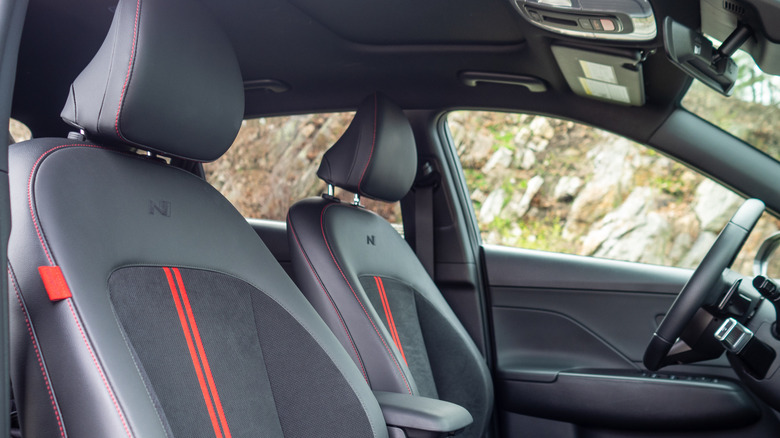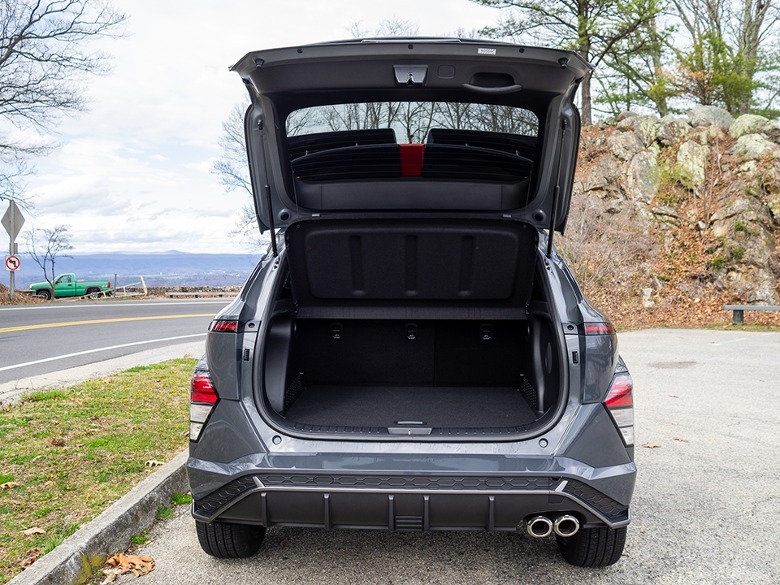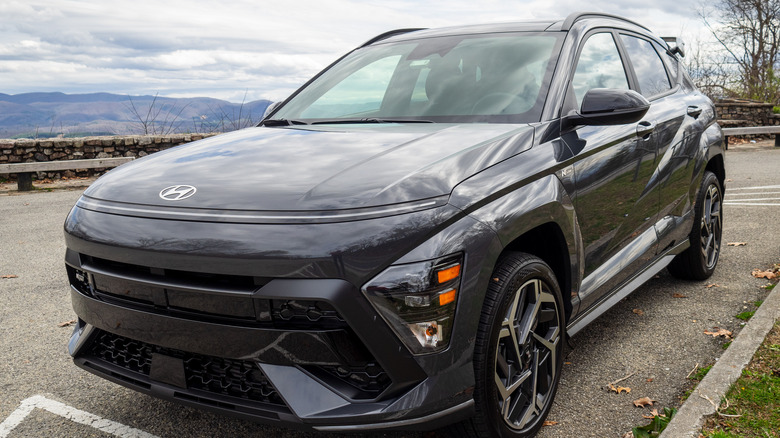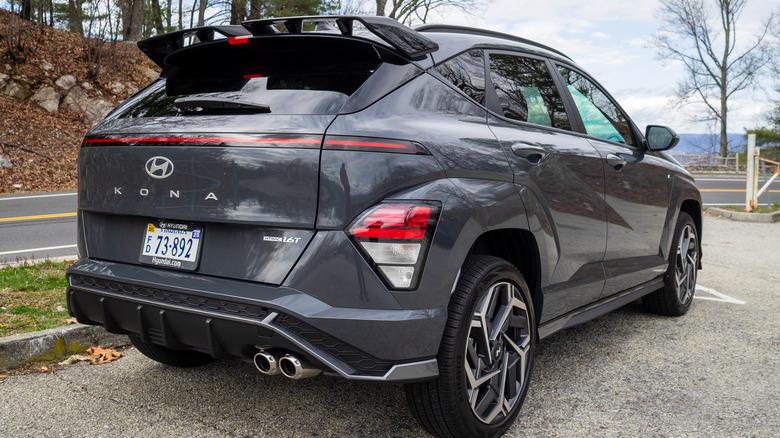2024 Hyundai Kona Review: A Small Crossover That Checks All The Big Boxes
- Turbo power delivers off the line for N Line, Limited trims
- 261 mile range Kona Electric option is decent
- Front-wheel, all-wheel drive options available across the gas-powered range
- Minimalist dash suits the new Kona well
- Wireless charging, Apple CarPlay and Android Auto keep everything tidy
- No Kona N for enthusiasts
- No hybrid for North America
- Kona Electric SE's 200-mile range pales compared to upper trim levels
- Kona Electric pricing a bit much for the subcompact crossover segment
First launched in the middle of the previous decade, the Hyundai Kona subcompact crossover promised consumers a fun machine with funky styling, and without breaking the bank. There was even an sportier N version, as if to declare to the world that small crossovers needn't be seen solely as underpowered penalty boxes designed for compliance, nor as merely placeholders until owners grow up and buy a "real" vehicle.
Along with highly competitive pricing and Hyundai's 10-year/100,000-mile warranty, the first-generation Kona was Hyundai's fifth most-popular vehicle in the United States market for 2023. The Korean automaker is aiming to not just repeat that success with the second-gen Kona, introduced into the U.S. market in 2023 for the 2024 model year, but to improve on it.
As a result, the new Kona line-up covers a wide range. At the one extreme, there's the 2024 Kona N Line, offering a sportier twist atop a model tree that spans base SE all the way to the luxury-minded Limited. And, because electrification still appears to be the path most automakers are taking into the 2020s and beyond, there's also the fully electric Kona Electric, also entering its second generation with the 2024 model year.
From gas-first to electric-first
The Hyundai Kona's short history with the world began in June of 2017, when the first-generation subcompact crossover made its grand debut in Seoul, South Korea. Until the Venue debuted in 2019, the Kona was Hyundai's smallest crossover: For the U.S. market, lower trims received a 2.0-liter inline-four paired with a six-speed auto, while higher trims got a 1.6-liter turbo-four with a seven-speed dual-clutch transmission. The Kona N turned everything up to 11, with a 2.0-liter turbo-four paired with an eight-speed DCT, slamming down up to 286 horses and 289 lb-ft of torque for maximum thrills on the way to the supermarket.
Meanwhile, the Kona Electric arrived in the U.S. in 2019, joining the Ioniq (then a single model) as Hyundai's second EV offering. The subcompact crossover EV offered a 64 kWh battery for a range of 258 miles on a single charge, and went on to heavily influence the ethos of the second generation. Per Hyundai, the all-new Kona would be "electric-first," with hybrid and non-hybrid powertrains adapted to fit the slightly longer footprint of the subcompact crossover.
Turbo or electric?
The bad news is there's no Kona N for the second-gen Hyundai Kona, at least so far. Perhaps Hyundai will give us a new N to send down the quarter-mile in the near future, whether in turbocharged or high-powered electric forms (or maybe both). The good news, though, is the N Line and Limited both use the Smartstream G1.6T 1.6-liter turbo-four, with 190 horsepower and 195 lb-ft of torque to either the front wheels or, via Hyundai's optional HTRAC all-wheel drive system, all corners.
The lower-tier SE and SEL trims receive a non-turbo 2.0-liter inline-four, whose 147 ponies and 132 lb-ft of torque meet the road through the front wheels or the optional all-drive system. Both engines and drive combinations are connected via an eight-speed automatic across the entire range.
The Kona Electric, on the other hand, is front-drive only, with a single electric motor and a single-speed gear reduction transmission to put power from the pack to the tarmac. All trim levels deliver the same 188 lb-ft of torque, though the SE's electric motor generates just 133 horsepower compared to the SEL's and Limited's 201 horses. U.S. consumers seeking a hybrid Kona, alas, will be left wanting for now, as the Kona Hybrid is available in most parts of the world aside from North America.
A bit of minimalism, a bit of the future
The 2024 Hyundai Kona continues with its big changes on the inside. Gone is the two-section dash for both electric and non-electric versions of the subcompact crossover, and in their place is a single-section unit housing a pair of 12.3-inch displays, one of which is a touchscreen. And if the new dash, steering wheel, and transmission stalk look familiar to you, that's because all of the above come from the IONIQ line of Hyundai EVs. Those not used to twisting the square knob to shift the gears around will have a small learning curve to go through.
The Kona N Line gets some fun orange accents on the dash and steering wheel, while the Kona Electric Limited receives Sage Green accents if the Sage Green interior option is chosen. Thankfully, not everything is buried in the center 12.3-inch touchscreen display, as the radio and HVAC units are controlled via minimalist physical buttons. It's a very clean look for this new-gen Kona.
To keep things clean, Hyundai recently made wireless Apple CarPlay and Android Auto available to the Kona: Previously, it was only supported on the automaker's smaller-screen infotainment system. There's also a wireless charging pad tucked under the HVAC unit to maintain the minimalist presentation established by the dash. Alas, there is no 360-degree camera on most trims of the Kona, aside from the Limited trim levels on both the electric and non-electric versions. However, there are plenty of standard safety features for the Kona, including blind-spot monitoring, rear cross-traffic collision avoidance, lane-following and -keeping assist, and adaptive cruise control.
Which vibe do you prefer?
As with the array of drivetrain options, so too is there a broad selection of interior finishes to pick between. The N Line, of course, goes for a sporty flair with a front pair of N Line Sport Combination buckets featuring the Hyundai N logo stitched underneath the headrests, a pair of orange stripes going down the center of the suede section, and orange contrast stitching. The seats will actively warm you up on cooler days, but only the Limited has ventilated seating for the summer months. The Kona Electric Limited, meanwhile, continues the optional Sage Green theme with Sage Green trimmed front seats. The rest of the lineup ranges from cloth seating for five to H-Tex leatherette.
The increased overall length, width and height for the second-gen Hyundai Kona means a bit more room for all of your groceries, IKEA flatpacks, and luggage than the previous generation. With the rear 60/40-split bench upright, all non-electric and electric Konas work with 25.5 cu-ft of cargo space. Fold down the entire bench, though, and there's 63.7 cu-ft for quite a bit of shopping bags or camping gear to reside within. The optional roof rack, of course, leads to even more cargo space possibilities.
Rear passengers will feel a bit cozy when it comes to legroom, mind, though less so than the previous Kona generation. The non-electric version jumps from 35.2 inches to 38.2 inches of back row leg space, while the electric models climb from 33.4 inches to 36.4 inches (the battery pack eats a little into the floorspace).
New Kona, who's this?
Behind the wheel of the second-gen Kona N Line, the charms of a subcompact crossover were not lost on me. Despite the lack of a 360-degree camera on this particular trim, forward visibility was good enough for pulling into parking lots like the local grocery store. Having already spent time in the all-electric IONIQ 5 and IONIQ 6, the controls for the Kona were familiar to me once the surprise of seeing them in a non-IONIQ setting quickly wore off. The exterior is a bit polarizing compared to the previous-gen Kona, sharing a similar design language up front with the refreshed Sonata, but there will be no mistaking this subcompact crossover as anything but a Hyundai.
After my usual in-town driving and the big loop up and down Draper Overlook in Pulaski County, Virginia — which it handled quite well thanks to its short wheelbase, zippy turbo-four, and excellent handling manners — I managed around 22 mpg. The turbocharged Konas have a combined 28 mpg rating (26 city/32 highway), while the 2.0-liter models boast a combined 31 mpg rating (29 city/34 highway for the SE, 28 city/35 highway for the SEL).
The Kona Electric, on the other hand, has an all-electric range between 200 miles and 261 miles, based on whether the SE (with a 48.6 kWh capacity battery) or the SEL or Limited (with a larger, 64.8 kWh battery) is chosen.
2024 Hyundai Kona Verdict
The 2024 Hyundai Kona is not a bad subcompact crossover for the value. Starting MSRP for the non-electric SE is $25,435 with destination, while this N Line as-tested came out to $33,695 with destination. The top-tier non-electric Limited starts at $31,800, which is on the doorstep of the electric SE's starting MSRP of $32,675; the electric Limited is the priciest of the 2024 Kona lineage at a starting MSRP of $41,045.
No matter which 2024 Kona you choose, though, you'll have a small SUV that won't leave you feeling like you've settled for less. It would be nice to have the Kona Hybrid on our shores for those who want to save fuel but don't want to also worry about where to plug-in, as well as a new Kona N for, once again, blowing the doors off the competition (which has amounted to nobody else so far; the idea of a performance subcompact crossover is alien to most other automakers). Still, judged on style, value, and practicality, there's a good chance the second-gen Kona will keep the hits coming for Hyundai for years to come.
